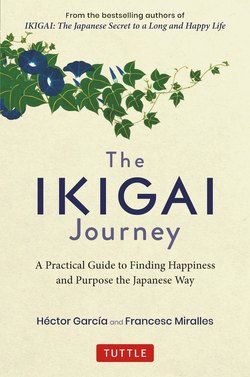Читать книгу The Ikigai Journey - Francesc Miralles - Страница 8
На сайте Литреса книга снята с продажи.
ОглавлениеPART ONE
A Journey Through Our Future
Tokyo 東京
The Shinkansen effect and other techniques for creating great personal projects and developing the inner discipline to see them through
Our starting point is Shinjuku Station, which is traversed by between three and four million passengers a day and is registered in the Guinness Book of World Records as the busiest transport hub in the world.
Shinjuku is the epitome of what Japan is capable of achieving:
The first challenge here is managing to meet someone, since this station has over two hundred exits, and getting it wrong can be disastrous. To make things easier for ourselves we decided to meet in the New York Bar on the 52nd story of the Park Hyatt Hotel, the very place where several scenes from the movie Lost in Translation were filmed.
Our table is candlelit and encircled by a large window offering views of Tokyo’s never-ending sea of buildings. The cityscape shines and twinkles as though it would like to transform into a starry sky.
A live jazz band is playing Miles Davis.
“Here in Tokyo, don’t you get the feeling you’re in the future?” asks Francesc as he sips on his Yamazaki whiskey.
“That’s one of the reasons why I live here,” replies Héctor. “Science fiction and futuristic stuff has always appealed to me.”
“But doesn’t it get to you? Doesn’t this obsession with perfection seem a little inhuman to you?”
“Sometimes, yes, I could spend hours telling you about how smothering it is to work in such a perfectionist business environment, but I like to look on the bright side of things.”
“Tell me something positive Héctor… if you had to choose one lesson you’ve learned from Japan after living here for twelve years, what would it be?”
“Ganbarimasu!”
“Tiramisu?” Francesc laughs.
“Not tiramisu! It’s pronounced ganbarimasu and it means ‘trying your hardest to achieve an objective.’ It’s a word the Japanese use when they’re facing a challenge, whether it’s personal, or sports, or work related. Ganbarimasu means ‘never giving up,’ and that is what I admire the most about the Japanese.”
“They don’t give up even if it’s a seemingly impossible objective…that Shinkansen effect,” adds Francesc.
“For sure, having objectives that seem impossible, or setting ourselves lofty ambitions, is what activates the Shinkansen effect in us. But if we don’t combine it with the power of ganbarimasu—the continuous effort—our dreams for the future will fade away and never become reality.”
“Get ready to activate your Shinkansen effect, Héctor! On this journey, we’re going to finish this book.”
“Ganbarimasu!”
On leaving the Park Hyatt, we moved on to one of the tiny bars hidden away in the backstreets next to Shinjuku Station.
The neon lights and the constant hustle and bustle here makes it seem as though it is never nighttime. Along with Shibuya, this is one of the Tokyo neighborhoods that never sleeps. A frenzied rhythm with no allowance made for rest, with people forever rushing around trying to get the most out of everything and enjoying themselves as much as possible after work.
In a bar that has room for just three customers, we meet a man who has worked for over forty years for the Tokyo city council. We chat briefly (while a strange young man with two cats in a basket watches us) then he comes with us to another backstreet. After climbing several stories of a filthy building, we end up in an Okinawan restaurant, where a man is playing traditional music on a sanshin, a string instrument from the southern islands.
This ambience makes us feel nostalgic about the journey we made to Ogimi to write our previous book, Ikigai. This is where our first night in Tokyo ends.
The following day, we climb aboard the legendary bullet train.
The Village of Centenarians
In our previous book, Ikigai – The Secrets of Japan for a Long and Happy Life, we told of our adventures in Ogimi, a village with little more than three thousand inhabitants in the north of Okinawa, which is considered the place with the highest life expectancy in the world. Not only do they live a long time, but they also have one of the lowest rates of cancer in Japan, and the same is true of other diseases such as diabetes.
Many scientists have gone to Ogimi to study the locals. We went there with a camera on our shoulder and interviewed more than a hundred old people over the course of a week. We asked them about their daily routines, their diet, their family and friends, and about their secret for a health, y long life.
Of course, we also asked them what their ikigai was.
Living with them, we realized nobody was really retired. They were all busy and many of them were working several jobs.
“Ever since you stopped doing the accounting at the greengrocer’s you’ve started to lose your edge,” says Akiko to a ninety-six-year-old friend, scolding him for having relaxed after leaving his job. At the age of ninety-two, Akiko combines her role as head of the neighborhood association with the sale of handmade bags in a village shop. She is still fully active and told us: “If you don’t do anything, death comes for you.”
One of the conclusions we reached in our investigation was that the village of the centenarians’ inhabitants have found their ikigai while never ceasing to be active. Perhaps the greatest secret to longevity is to always keep busy, devoting our time to activities we love.
